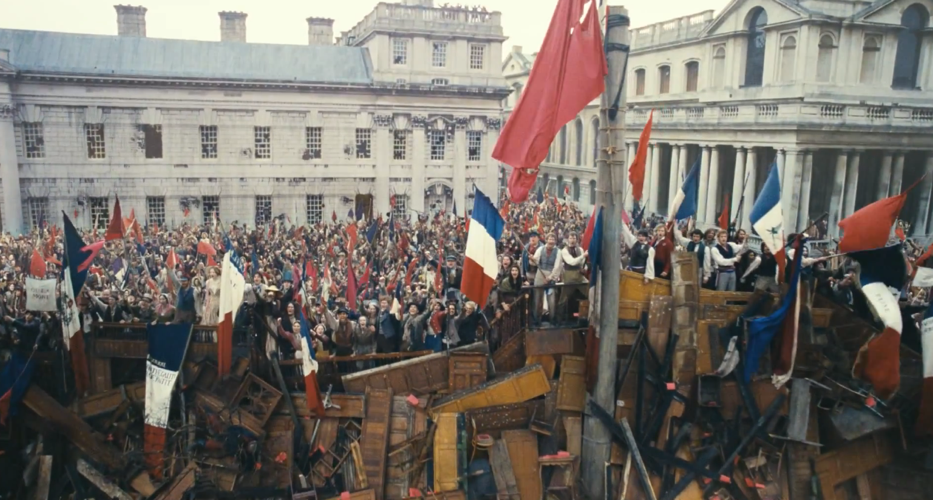
The Christmas holidays are always accompanied by a swell of Oscar hopefuls, eager to earn their nominations of the most prestigious awards in the film industry. This year, the highly anticipated Les Misérables joined the volumes of aspiring films released in late 2012 and was met by two passionate groups of people: those who adored it, and those who despised it. The film is an adaption of the Broadway production of the same name, but it also brought elements of Victor Hugo’s novel that inspired the original musical back into the story. Despite the throngs of people who voiced their hatred towards the film, Les Misérables earned an impressive $422 million worldwide, and the nearly three hours of live singing, intricate sets, and beautifully realistic hair and makeup paid off, as it snagged eight nominations for the 2013 Academy Awards. Over the course of the night, it won three, including Best Supporting Actress for Anne Hathaway’s highly acclaimed portrayal of a young woman who is forced into prostitution to support her young daughter. However, fans of the musical now have another event to look forward to now that the award season has come to a close: the DVD release.
Les Misérables’ production was greatly influenced by Broadway, but in more ways than just the songs and the story. Upon watching the film, minor characters have voices as good as (and sometimes even better than) the main characters, which is no coincidence. A bonus feature on the DVD, entitled “The West End Connection,” explores the roles of former stage actors who now act in the film. Most notably, British actress Samantha Barks won the role of Eponine for a second time after portraying her on stage just two years ago, and she shares her journey playing the character through two very different mediums. She beat out stars such as Taylor Swift, Lea Michele, and Scarlett Johansson for the role, proving that one does not need a household name in order to win a blockbuster role. Additionally, Colm Wilkinson, who portrayed the film’s protagonist Jean Valjean (now played by Hugh Jackman) in the original London and Broadway productions of the show, brought the story full circle with the release of the film. He now plays the small but important role of the Bishop in the movie, who urges Valjean to become a better man. In addition to Barks’ and Wilkinson’s roles, the feature explores the smaller supporting actors who bring Broadway influence back to the film. The original Eponine (Barks) was played by Francis Ruffelle once upon a time, and she now appears as one of the prostitutes alongside Fantine (Hathaway). Hadley Fraser, who played Marius (Eddie Redmayne) in 2002, returns as a French army officer who tries to quell the young but passionate group of revolutionaries. A surprising number of former stage actors also make smaller cameos in the film, including Ashley Artus, Lynne Wilmot, and Katie Hall (none of whom appear in the bonus feature).
In addition to the Broadway feature, both the DVD and Blu-ray discs contain a variety of other extras. On the DVD, there is a commentary track with director Tom Hooper about the film that plays with the movie in the background. Additionally, the DVD has small features on casting the iconic roles of the film, the design and production (including process of recreating a set of 19th century Paris using real cobblestone and running water), and the influence of Victor Hugo’s novel on the movie. The Blu-ray takes these features one step further, as it includes interviews about the experience of shooting in places such as docks on the coast of England, an underground chapel in London, and the ancient city of Winchester, England. In addition, actors share their experiences with the arduous task of singing live for the production, as well as the cast’s strange and often humorous vocal warm-up techniques. Perhaps the most interesting warm-up was that of Samantha Barks, whose distinguished meows were able to be heard throughout the dressing rooms by the cast and crew. The Blu-ray also documents the process of building the film’s iconic barricade. To make the scene as real as possible, the actors actually built their own barricade out of whatever furniture, doors, and boards they could find in the amount of time that they were given. The barricade seen in the film is the same one that the actors were instructed to built in one take, and Eddie Redmayne describes it as an “extraordinary boobytrap,” just as the original barricades would have been.
Although Les Misérables is now a story of the past, its greatest accomplishment is its ability to stay relevant due to its documentation of human life. The film stems from real life, and although it is a fictional story, it provides characters dealing with struggles that are still relevant today. Even though the stories of Jean Valjean, Fantine, Eponine, and the other characters of Les Misérables are now in the past, they are not very different from the lives people live today. There is no magic, no talking animals, and no superheroes. The cast is entirely human, and the core of their fictional stories are tragedies that not only took place in 19th century France, but are also prevalent in modern day America. Women still struggle with prostitution, young hopeful students still fight for change in the world they live in, and former convicts strive for a better life. Although these stories are not accompanied by song, they still remain relevant 200 years later. With the release of the film on DVD this week, Les Misérables reminds us what it means to be a great film, as it combines seamless production with a gripping story, and perhaps the most important element of all: truth.








